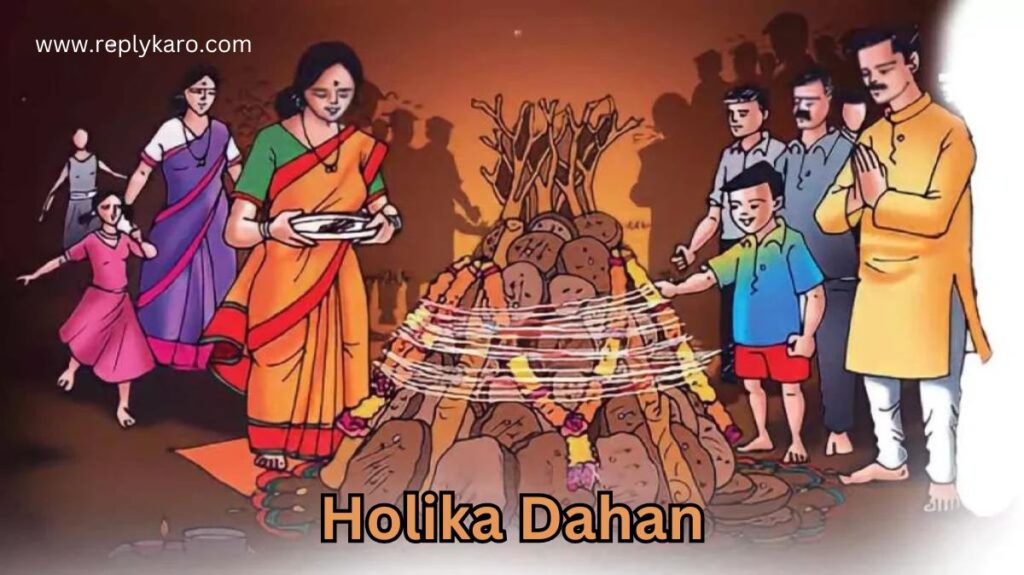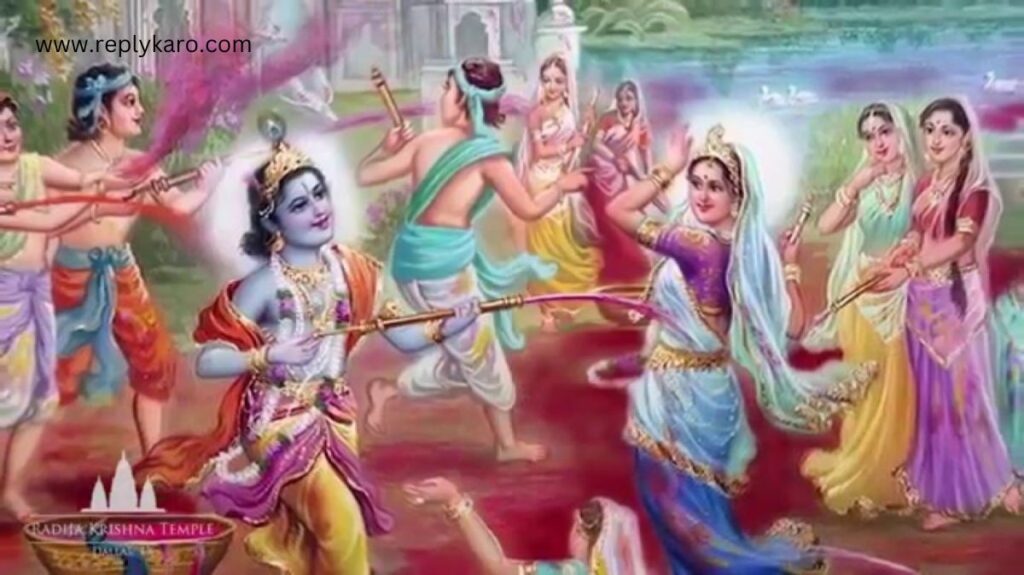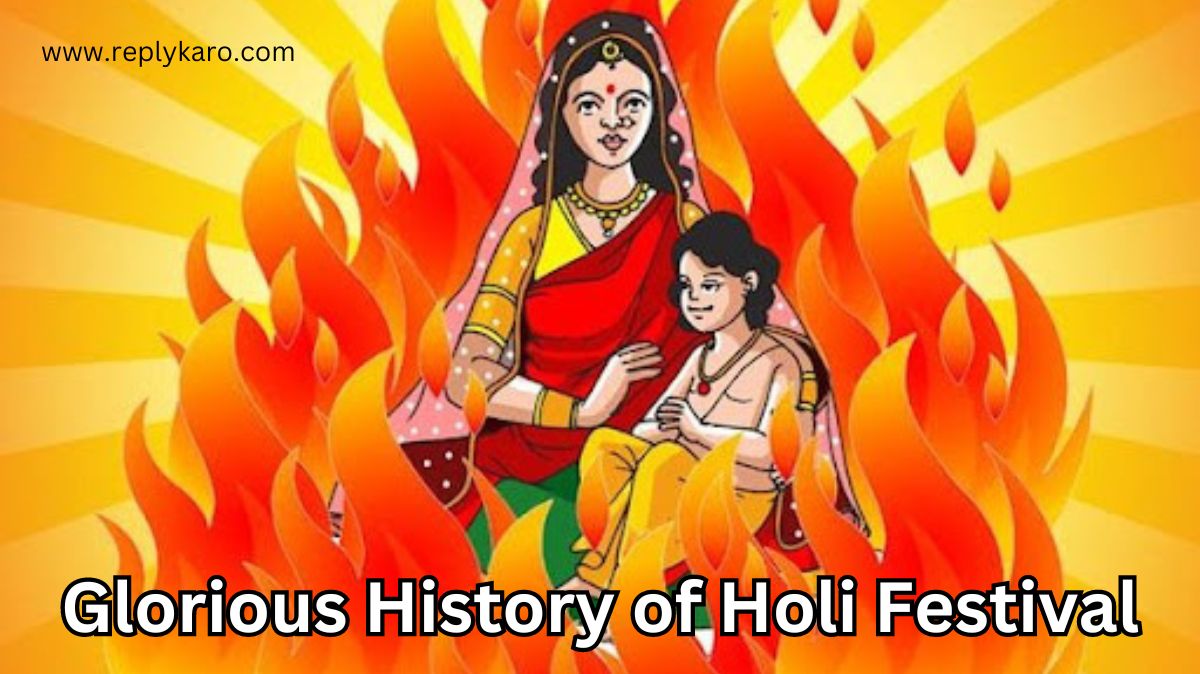Holi: A Vibrant Celebration Steeped in Ancient Mythology
Holi, the Festival of Colors, explodes onto the Indian subcontinent every spring, a vibrant explosion of joy, music, and, of course, colored powders. But beneath the revelry lies a rich history, woven with tales of good versus evil, devotion, and the eternal cycle of nature’s renewal. Let’s delve into the fascinating origins of Holi, a festival that transcends religion and unites communities in a riot of colors.
The Legend of Prahlad: Triumph of Good Over Evil
The most prominent narrative associated with Holi is the legend of Prahlad, a young boy whose unwavering devotion to Lord Vishnu clashed with his tyrannical father, King Hiranyakashyap. The king, blinded by pride and power, declared himself a god and demanded worship from his subjects. However, Prahlad, a staunch Vishnu devotee, refused. This defiance enraged Hiranyakashyap, who devised a series of plans to eliminate his own son.
One such scheme involved Holika, the king’s sister. Holika possessed a boon that made her immune to fire. The plan was for Holika to enter a pyre with Prahlad on her lap. However, divine intervention ensured Prahlad’s safety. Holika, consumed by the flames, met her demise, while Prahlad emerged unscathed, protected by his unwavering faith. The burning of Holika, commemorated on the eve of Holi, symbolizes the victory of good over evil and the triumph of devotion.
The Many Colors of Holi: Beyond Mythology
While the Prahlad legend is widely accepted, other narratives contribute to the rich tapestry of Holi’s history. Some stories suggest the festival finds its roots in ancient harvest rituals, celebrating fertility and the arrival of spring. The vibrant colors might symbolize the blossoming of flowers and the renewal of life after the harsh winter.
Another legend associates Holi with the playful love story of Radha and Krishna, where Krishna, with his dark complexion, playfully smeared colors on Radha, the fair-skinned gopi (milkmaid). This playful act is seen as a celebration of love and equality, where social barriers dissolve in the joyous spirit of Holi.
Holi Through the Ages: A Festival in Evolution
The earliest references to Holi can be traced back to ancient texts like the “Harivamsa Purana” (around 7th century CE) and the “Bhavisya Purana” (possibly 2nd-12th century CE). These texts offer glimpses of the festival’s early form, with mentions of bonfires, playing with colors, and drinking intoxicating beverages.
Over the centuries, Holi evolved, incorporating regional customs and traditions. Mughal emperors like Akbar embraced the festival, further solidifying its significance. Historical records suggest the festival wasn’t always associated with dry, powdered colors. Initially, people used natural dyes extracted from flowers and plants, creating a more organic and symbolic experience.
Holi Today: A Global Celebration
Today, Holi transcends geographical boundaries. Celebrated not just in India and Nepal but also by Hindu communities worldwide, the festival embodies the spirit of unity and togetherness. People of all ages, social classes, and religions come together to participate in the joyous chaos. The traditional bonfire, now called Holika Dahan, signifies the burning away of negativity. The next day, people smear each other with vibrant colors, symbolizing the arrival of spring and the shedding of inhibitions.

The celebration extends beyond the throwing of colors. Traditional sweets like Gujiya and Thandai are prepared, and communities gather for singing, dancing, and feasting. Holi is not just a spectacle of color; it’s a reminder of the power of faith, the importance of community, and the joy of welcoming new beginnings.
Beyond Mythology: Exploring the Cultural Significance of Holi
While the mythological narratives provide a strong foundation for Holi’s significance, the festival holds a deeper meaning within the cultural landscape of India and beyond. Here’s a look at some of the broader social and cultural aspects of Holi:
Social Harmony and Equality: During Holi, social hierarchies and differences take a backseat. Everyone, regardless of caste, creed, or social status, participates in the color throwing and revelry. It becomes a powerful symbol of social cohesion, fostering a sense of community and belonging.
Symbolic Cleansing and Renewal: Holi coincides with the arrival of spring, a time of natural renewal. The burning of Holika Dahan signifies the cleansing of negativity and the discarding of past grievances. By smearing colors on each other, people symbolically wash away past sins and start afresh.
Celebration of Fertility and Abundance: The vibrant colors used during Holi might also have roots in ancient harvest rituals. Colors like red and yellow symbolize fertility and prosperity, reflecting the hope for a bountiful upcoming harvest season.
Artistic Expression and Playfulness: Holi is a time for uninhibited expression through song, dance, and the throwing of colors. This festive spirit allows people to let loose, have fun, and connect with their inner child. It’s a reminder to embrace the playful side of life.
Regional Variations: A Tapestry of Traditions

Holi is not a monolithic celebration. Across India and the world, regional variations add a unique flavor to the festivities. In Mathura and Vrindavan, the festival commemorates the love story of Radha and Krishna through elaborate plays and celebrations. In West Bengal, the festival is known as Basanto Utsav, with a focus on welcoming spring and worshipping Goddess Saraswati. In South India, the festival is called Ugadi, marking the beginning of the new year with traditional prayers and rituals.
Environmental Concerns and Sustainability
As Holi’s popularity grows, so do concerns about the environmental impact of synthetic colors. Many communities are now opting for organic colors made from natural dyes like turmeric, beetroot, and indigo. This shift towards eco-friendly practices ensures the festival remains sustainable for future generations.
Conclusion:
Holi is more than just a riot of colors; it’s a vibrant tapestry woven with history, mythology, and cultural practices. It’s a celebration of life’s simple joys, a chance to connect with loved ones, and a reminder of the importance of community and social harmony. As the world embraces this colorful festival, its legacy continues to evolve, carrying the timeless message of hope, renewal, and the triumph of good over evil.








